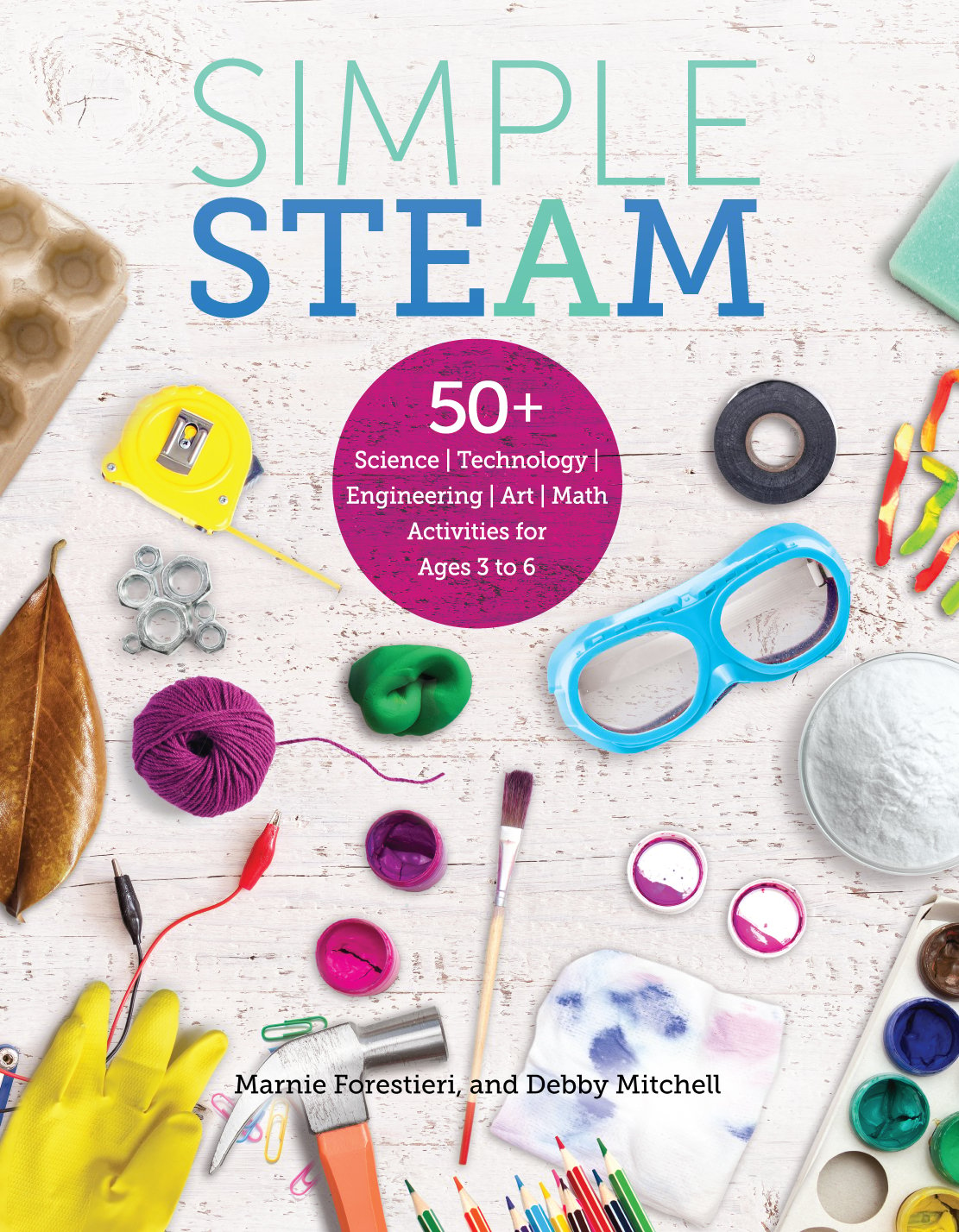Think of what you do when you walk into a store and see a blanket that appears to have a fuzzy texture. Regardless of if you plan on buying it or not, your first reaction would be to touch the blanket to feel just how fluffy it is. Likewise, when you’re walking around a store and see something that may have a smooth feeling surface (for example, silk), you’ll stick your hand out just to get a sense of how it feels. We use our sense of feel and touch every day to interpret the world. This sense and use of touch is learned during childhood and is continually used throughout our lives.
You can help your child identify soft, rough, smooth, hard, bumpy, or irregular textures by creating a paper “hand” and placing various textured materials onto it. This activity is just one of the 50+ included in Marnie Forestieri and Debby Mitchell’s book Simple STEAM, which focuses on science, technology, engineering, art, and math for children ages 3 to 6.
Talk like artists!
Bumpy−having an uneven and irregular surface
Feel−the act of touching something to examine it
Hard−something that is solid or firm and not easily compressed
Rough−having a coarse or irregular surface
Smooth−having an even surface with no lumps or rough areas
Surface−the outside part of an object
Texture−the feel of a surface
What You Need:
- Paper
- Marker
- Scissors
- Glue
- Pompom or cotton ball
- Shelf liner
- Sandpaper
- Metal washers or uncooked pasta
- Small rocks or sticks
- STEAM journal
How to Do It:
- Ask your child to touch different objects (face, beard, pillow, and so on) and describe the feeling. “What can you tell me about a rough (smooth, hard, bumpy) surface?” Talk about touch and feel.
- With your child, prepare to make a paper “hand” with different textures.
- Help your child trace his hand and then make a cutout of the hand.
- Glue a different object on each finger of the cutout (soft, smooth, rough, hard, bumpy).
- Label the different fingers with the correct term for touch.
- Encourage your child’s curiosity: I wonder what each of the fingers would feel like if you rubbed them against your skin.
- Encourage your child’s critical-thinking skills: What can you tell me about the sense of touch?
Predict and Hypothesize:
You can further teach your child about texture by teaching her how to perceive texture using sight. To do this, walk around the house with her and ask her how she thinks the texture of household items such as the sofa, carpet, tile, dishes, and houseplants will feel.
Additional activities in Simple STEAM include exploring rain clouds by simulating their concepts using shaving cream, learning about the sun’s energy by making a solar oven, building math readiness by exploring pattern design, and gaining an understanding of inclined planes, friction, and gravity by building a mini zip line.
Instructions
Set the above items in a work area for the children.
What to Do
1. Read a zoo book or two. Ask the children if they have been to the zoo.
2. Encourage them to talk about their experiences by asking them questions:
* What animals did you see at the zoo?
* What are your favorite animals?
* Do you like the zoo?
* What else can you tell the class
about the zoo?
* Do you know that all zoos are not the
same?
3. Encourage all the children to participate in
the conversation.
Teacher - to - Teacher Tip
* Have the children build their own zoo with the
materials. They can put animals in different areas of
the zoo. It is often best if the children work in
small groups of two to four.
Assessment
Consider the following:
* Can the children describe what they saw when they visited the zoo?
* What animals would the children like to see when they go to the zoo again?
